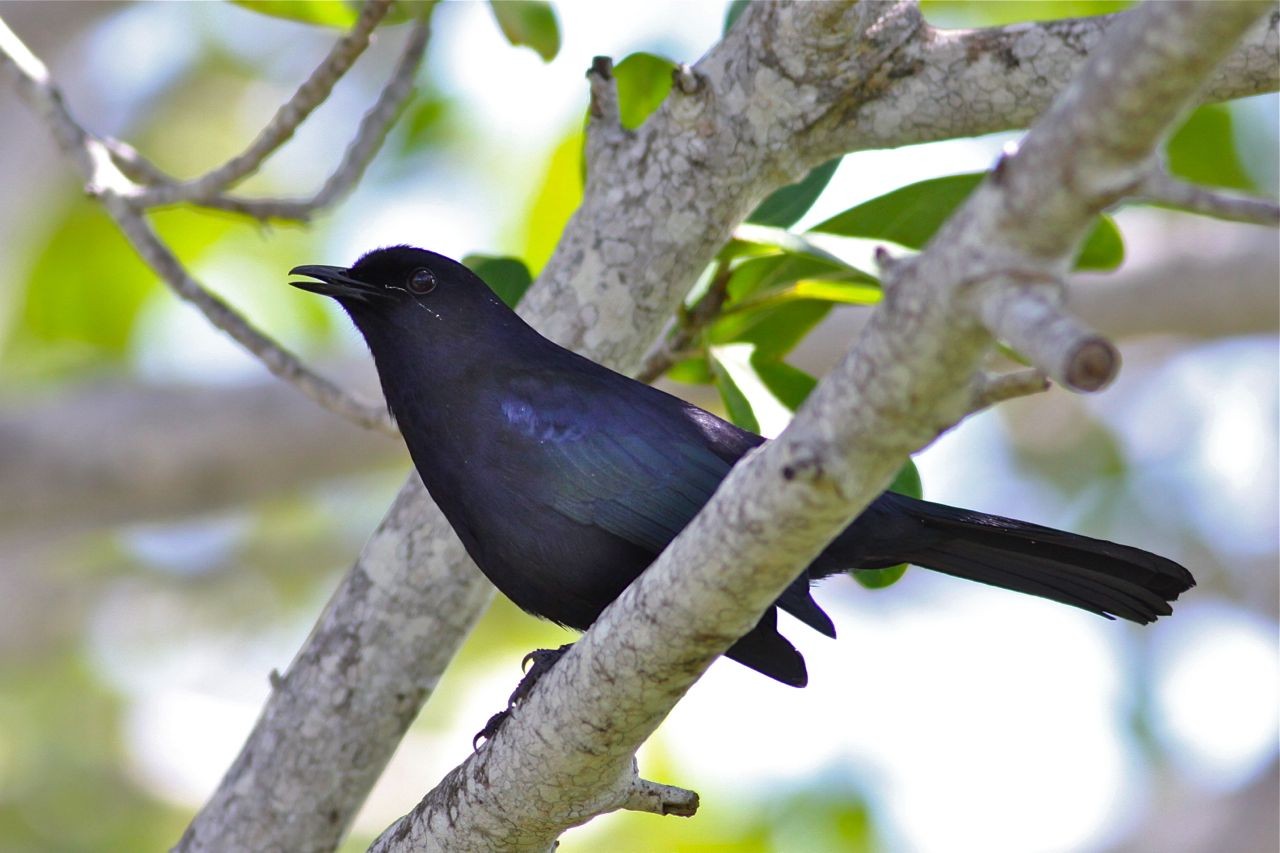Black Catbird
A species of Black Catbird Scientific name : Melanoptila glabrirostris Genus : Black Catbird
Black Catbird, A species of Black Catbird
Botanical name: Melanoptila glabrirostris
Genus: Black Catbird
Content
Description General Info
Description
At 19–20.5 cm (7.5–8.1 in) in length and 31.6–42 g (1.11–1.48 oz) in mass, the black catbird is the smallest of the mimids. It has short, rounded wings and a relatively long tail. The sexes are similar in appearance, though the male tends to be heavier. The plumage is glossy black with a purplish sheen overall, though the rectrices and primary and secondary coverts have a greenish sheen and the remiges are a duller blackish-brown color showing reduced sheen. The female is less glossy than the male, and juveniles are brownish-gray with mottling below. The legs are black. The bill, which is black and shorter than the head, has a generally straight culmen, decurved toward the tip. The iris is a dark reddish color in adults and gray in juveniles. 
Size
21 cm
Nest Placement
Cavity
Feeding Habits
Black Catbird primarily consumes insects, using its slender bill to forage among foliage. It exhibits unique preferences for certain arthropods, adapting its feeding times to the prey's activity patterns.
Habitat
Black Catbird typically inhabits scrublands, including regions of deciduous thorn-scrub and woodlands with dense shrubs in the understory. These birds are often found along woodland edges and are adapted to low deciduous woodland environments. They thrive in areas where thickets are abundant and the woodland edge is prominent. Geographically, their preferred habitat spans broad regions with low elevations, specifically areas where the vegetation offers ample coverage and the forest canopy does not become too tall or open.
Dite type
Insectivorous
General Info
Feeding Habits
Bird food type
Bird Feeder Type

Platform
Distribution Area
The black catbird is endemic to the Yucatán Peninsula. It occurs as far south as the Mexican state of Campeche, northern Guatemala and northern Belize, and is found on the offshore islands of Cozumel, Isla Mujeres, Ambergris Caye, Caye Caulker, Lighthouse Reef and Glover's Reef. Although the type specimen of the bird was apparently collected in northwestern Honduras in 1855 or 1856, it has not been recorded in that country since, and must have been rare if it was ever there. Some authors feel that the specimen might have been mislabeled, and have come instead from northwestern "British Honduras" as Belize was then called. There is also a single specimen of a black catbird collected from Brownsville, Texas in 1892. Although obtained by a reportedly reputable collector, and accepted by the Texas State Records Committee, the origin of this specimen is a source of some controversy, and it has not been accepted by the American Birding Association or the American Ornithologists' Union. The species is found at low elevations in semi-arid to humid areas in habitats ranging from scrubland and abandoned farmland to wood edge. It prefers areas with dense thickets, scrub or understory, and is uncommon in taller forest where the vegetation beneath the canopy is more open. Although it is largely sedentary, there may be some localized seasonal movements away from the drier northern parts of the Yucatán Peninsula in late summer to early winter. 
Species Status
The range of the black catbird is small and dwindling further due to habitat loss. In 2008, the world population was estimated to be less than 50,000 and decreasing. Due to the speed of its decline, which is reported to have been "precipitous" on Caye Caulker between 2003 and 2008, the International Union for the Conservation of Nature has assessed the species as near threatened. The late 20th century arrival of the shiny cowbird, a brood parasite, into the Yucatán may cause problems for the black catbird as (based on past host choices) the catbird may become a target of the cowbird. 
Scientific Classification
Phylum
Chordates Class
Birds Order
Perching birds Family
Mimids Genus
Black Catbird Species
Black Catbird 